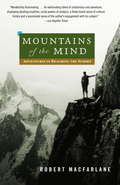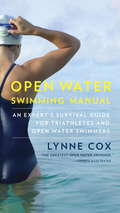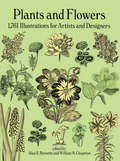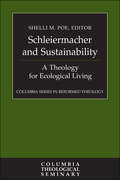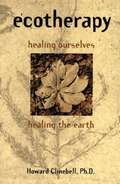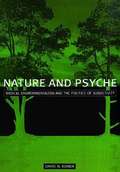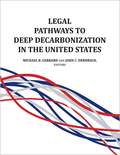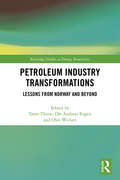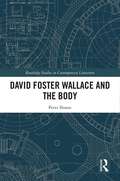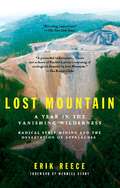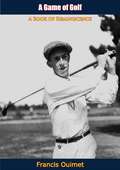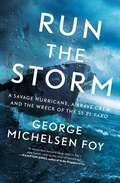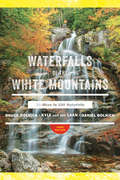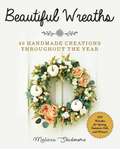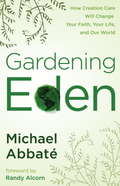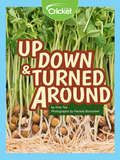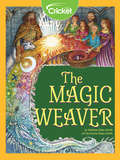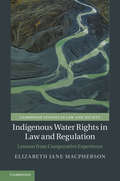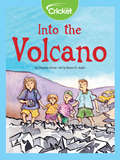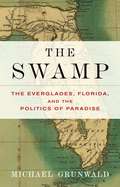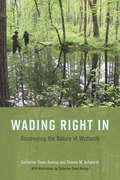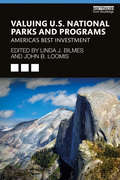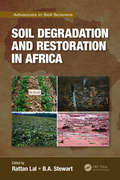- Table View
- List View
Mountains of the Mind: Adventures in Reaching the Summit (Landscapes)
by Robert MacfarlaneCombining accounts of legendary mountain ascents with vivid descriptions of his own forays into wild, high landscapes, Robert McFarlane reveals how the mystery of the world's highest places has came to grip the Western imagination--and perennially draws legions of adventurers up the most perilous slopes. His story begins three centuries ago, when mountains were feared as the forbidding abodes of dragons and other mysterious beasts. In the mid-1700s the attentions of both science and poetry sparked a passion for mountains; Jean-Jacques Rousseau and Lord Byron extolled the sublime experiences to be had on high; and by 1924 the death on Mt Everest of an Englishman named George Mallory came to symbolize the heroic ideals of his day. Macfarlane also reflects on fear, risk, and the shattering beauty of ice and snow, the competition and contemplation of the climb, and the strange alternate reality of high altitude, magically enveloping us in the allure of mountains at every level.
Open Water Swimming Manual: An Expert's Survival Guide for Triathletes and Open Water Swimmers
by Lynne CoxLynne Cox has set open water swimming records across the world, and now she has focused her decades-long experience and expertise into this definitive guide to swimming. Cox methodically addresses what is needed to succeed at and enjoy open water swimming, including choosing the right bathing suit and sunscreen; surviving in dangerous weather conditions, currents, and waves; confronting various marine organisms; treating ailments, such as being stung or bitten, and much more. Cox calls upon Navy SEAL training materials and instructors' knowledge of open water swimming and safety procedures to guide her research. In addition, first-hand anecdotes from SEAL specialists and stories of Cox's own experiences serve as both warnings and proper practices to adopt. Open Water Swimming Manual provides a wealth of knowledge for all swimmers, from seasoned triathletes and expert swimmers to beginners exploring open water swimming for the first time. It is, as well, the first manual of its kind to make use of oceanography, marine biology, and to weave in stories about the successes and failures of other athletes, giving us a deeper, broader understanding of this exhilarating and fast growing sport.From the Trade Paperback edition.
Plants and Flowers: 1761 Illustrations for Artists and Designers (Dover Pictorial Archive Ser.)
by Alan E. Bessette William K. ChapmanThis comprehensive archive offers authentically detailed, copyright-free illustrations of hundreds of plants and flowers from around the world. Ideal for graphic artists, designers, and others in the arts and crafts, it will also serve both serious and casual botanists as a convenient reference and key to identification of a broad range of botanical species. Each illustration has been carefully selected from botanical archives for its scientific accuracy, artistic style, and suitability for reproduction. The plants and flowers are grouped by kind, uses, and habitats into seventeen categories, among them aquatic plants, carnivorous plants, grasses, rushes and sedges, orchids, ornamental plants, plants of commerce, mushrooms, molds and lichens, ferns, mosses, trees, shrubs, weeds, wildflowers, and vines. For easy and accurate reference, both common and botanical Latin names are given for each species whenever possible. All names have been compiled into two convenient indexes. Alan E. Bessette, Professor of Biology at Utica College of Syracuse University, is a well-known naturalist, botanical photographer, and author of numerous books and field guides on botanical subjects. William K. Chapman, a biology teacher and member of the adjunct faculty at Utica College, is a well-known speaker and writer on the gathering of wild foods, and the author of field guides to plants and animals of the Adirondacks.
Schleiermacher and Sustainability: A Theology For Ecological Living
by Shelli PoeSince the 1960s, theologians have been involved in efforts to guide Christians to reflection and action in light of planetary peril. The contributors to this volume illustrate how Friedrich Schleiermacher's theological work could fulfill that need. Schleiermacher's theology, they contend, finds its culmination in Christian social action and is remarkably conducive to ecological thinking in the modern world. <P><P> Each chapter deals with a particular locus in Schleiermacher's systematic theology, focusing on its implications for sustainable living. In so doing, Schleiermacher and Sustainability offers a sophisticated account of Schleiermacher's thought that will upend many estimations of his value for current constructive theology and provide a potent resource for those seeking to integrate ecological living into the marrow of their daily existence.
Ecotherapy: Healing Ourselves, Healing the Earth
by Robert AndersonHere is a trailblazing book on issues of vital interest to the future of humankind. Ecotherapy: Healing Ourselves, Healing the Earth sheds light on humankind’s most serious health challenge ever--how to save our precious planet as a clean, viable habitat. As a guide for therapists, health professionals, pastoral counselors, teachers, medical healers, and especially parents, Ecotherapy: Healing Ourselves, Healing the Earth highlights readers’strategic opportunities to help our endangered human species cope constructively with the unprecedented challenge of saving a healthful planet for future generations. <p><p> Ecotherapy: Healing Ourselves, Healing the Earth introduces readers to an innovative approach to ecologically-grounded personality theory, spirituality, ecotherapy, and education. The book shares the author’s well-developed theories and methods of ecological diagnosis, treatment, and education so professionals and parents, our most influential teachers, can rise to the challenge of saving our planet. <p> A systematic theory and practice guidebook, Ecotherapy: Healing Ourselves, Healing the Earth fills a wide gap in both the counseling and therapy literature and the ecology literature. It offers an innovative model for fulfilling the “ecological circle” between humans and nature with three action dimensions. These are self-care by being intentionally nurtured by nature; spiritual enrichment by enjoying the transcendent Spirit in nature; and responding by nurturing nature more responsibly and lovingly. <p> The theories and practical applications presented in the book come together to explore long-overlooked issues at the boundary between human health and the health of the natural environment. Psychotherapists, health professionals, and teachers; pastoral counselors and other clergy who counsel and teach; laypersons who are parents and grandparents; and individuals and groups interested in environmental issues will find Ecotherapy: Healing Ourselves, Healing the Earth essential for approaching the long-neglected earthy roots of the total human mind-body-spirit organism.
Nature And Psyche: Radical Environmentalism And The Politics Of Subjectivity
by David KidnerNature and Psyche argues that psychological and environmental writing and action are all too often colonized by the same assumptions that inhibit ecological and cultural diversity. Industrialized monocultures conceal the character of our alienation from nature and, thus, prevent the emergence of effective solutions. Drawing on a diversity of disciplines, David Kidner illustrates that traditional psychological understanding is often inherently hostile to the natural order, and that the dominant form of selfhood that has emerged in the industrialized world promotes the domestication of nature. In fact, even some of the most radical environmentalists, who simplistically oppose technology, are also trapped within this paradigm. The author demonstrates that a more critical historical and cultural awareness, rooted in nature, can enable a re-integration of nature and psyche.
Legal Pathways to Deep Decarbonization in the United States
by Michael B. Gerrard; John C. DernbachLegal Pathways to Deep Decarbonization in the United States provides a “legal playbook” for deep decarbonization in the United States, identifying well over 1,000 legal options for enabling the United States to address one of the greatest problems facing this country and the rest of humanity. <p><p> The book is based on two reports by the Deep Decarbonization Pathways Project (DDPP) that explain technical and policy pathways for reducing U.S. greenhouse gas emissions by at least 80% from 1990 levels by 2050. This 80x50 target and similarly aggressive carbon abatement goals are often referred to as deep decarbonization, distinguished because it requires systemic changes to the energy economy. <p> Legal Pathways explains the DDPP reports and then addresses in detail 35 different topics in as many chapters. These 35 chapters cover energy efficiency, conservation, and fuel switching; electricity decarbonization; fuel decarbonization; carbon capture and negative emissions; non-carbon dioxide climate pollutants; and a variety of cross-cutting issues. The legal options involve federal, state, and local law, as well as private governance. Authors were asked to include all options, even if they do not now seem politically realistic or likely, giving Legal Pathways not just immediate value, but also value over time. <p> While both the scale and complexity of deep decarbonization are enormous, this book has a simple message: deep decarbonization is achievable in the United States using laws that exist or could be enacted. These legal tools can be used with significant economic, social, environmental, and national security benefits.
Invasion of the Plastic Bags (Fountas and Pinnell LLI Purple #Level R)
by Judith StamperThe plastic bag problem. Can you imagine a world without plastic bags? Here's the shocking truth: disposable plastic bags didn't even exist fifty years ago. In less than fifty years, these bags have become part of everyday life. They're given out at stores, taken home, and then thrown away. The problem is they don't go away. They have invaded every corner of Earth. Many people say that the best solution to the plastic bag problem is to ban the bags altogether.
Petroleum Industry Transformations: Lessons from Norway and Beyond (Routledge Studies in Energy Transitions)
by Taran Thune Ole Andreas Engen Olav WickenTaking the case of the Norwegian petroleum industry as its vantage point, the book discusses the question of industrial transformations in resource-based industries. The book presents new, empirically-based analyses of the development of the petroleum industry, with an emphasis on three ongoing transformation processes: Technological upgrading and innovation in upstream petroleum. Globalisation of the petroleum industry and suppliers’ experiences of entering foreign markets. Diversification into and out of petroleum – and the potential for new growth paths after oil. Drawing together a range of key thinkers in this field, this volume addresses the ways in which the petroleum industry and its supply industry has changed since the turn of the millennium. It provides recommendations for the development of resource economies in general and petroleum economies in particular. This book will be of great interest to students and scholars of energy policy and economics, natural resource management, innovation studies and the politics of the oil and gas sector.
David Foster Wallace and the Body (Routledge Studies in Contemporary Literature)
by Peter SloaneDavid Foster Wallace and the Body is the first full-length study to focus on Wallace’s career-long fascination with the human body and the textual representation of the body. The book provides engaging, accessible close readings that highlight the importance of the overlooked, and yet central theme of all of this major American author’s works: having a body. Wallace repeatedly made clear that good fiction is about what it means to be a ‘human being’. A large part of what that means is having a body, and being conscious of the conflicts that arise, morally and physically, as a result; a fact with which, as Wallace forcefully and convincingly argues, we all desire ‘to be reconciled’. Given the ubiquity of the themes of embodiment in Wallace’s work, this study is an important addition to an expanding field. The book also opens up the themes addressed to interrogate aspects of contemporary literature, culture, and society more generally, placing Wallace’s works in the history of literary and philosophical engagements with the brute fact of embodiment.
Lost Mountain: A Year in the Vanishing Wilderness Radical Strip Mining and the Devastation of Appalachia
by Erik ReeceThe mountains of Appalachia are home to one of the oldest and most diverse ecosystems in North America. But they are also host to the mother lode of American coal, and a new form of strip mining has created a state of emergency for the Appalachian wilderness and the communities that depend on it. In powerful, stirring prose Erik Reece chronicles the year he spent witnessing the systematic decimation of a single mountain in Kentucky, exposing how issues of corporate hubris, government neglect, and class conflict have all contributed to the crisis. This book is a landmark defense of a natural treasure, a core part of our national identity threatened with extinction. Winner of the Sierra Club's David R. Brower Award for Environmental Journalism.
A Game of Golf: A Book of Reminiscence (The\sportstown Ser.)
by Francis OuimetFrancis Ouimet (1893-1967) was an unknown twenty-year-old amateur when he upset famed British golfers Harry Vardon and Ted Ray to win the 1913 U.S. Open. That spectacular victory at The Country Club (TCC) made him America’s first golf hero, drew new fans to the sport, and forever altered the image of golf as a stuffy, rich man’s game dominated by British and Scottish players.In this engaging memoir, first published in 1932, Ouimet reminisces about his life in golf and gives sage advice on playing the game. He vividly chronicles the boyhood he spent at his modest home across the street from The Country Club in Brookline, Massachusetts. With charm and wit he recalls how he scavenged for golf balls and clubs, learned to play on a homemade, three-hole course in his backyard, and sneaked onto The Country Club’s fairways to practice in the early morning hours. He recounts his caddying years, starting at age nine, the early amateur competitions, and the momentous 1913 U.S. Open tournament on his neighborhood course.Legendary is the story of Ouimet and his caddy, Eddie Lowery. Ouimet refused an experienced TCC member’s offer to carry his clubs during the 1913 playoff in favor of the ten-year-old boy.Ouimet’s illustrious amateur career journeys across the fairways of Hoylake, St. Andrews, Garden City, and Pebble Beach, and concludes with his victory in the 1931 U.S. National Amateur at Beverly Hills in Chicago.Brimming with exciting matches and great players such as Bobby Jones and Walter Hagen, these humble reminiscences of the working-class kid who changed the game of golf will inspire golf enthusiasts and general readers alike.
Run the Storm: A Savage Hurricane, a Brave Crew, and the Wreck of the SS El Faro
by George Michelsen Foy“Here is the pitch-perfect pairing of subject and author, a gripping deconstruction of one of recent history’s most terrible and vexing sea tragedies…A meticulous forensic study that, in Foy’s able hands, rises to the level of literature.” —Hampton Sides “Fans of The Perfect Storm and Into Thin Air will love this exquisitely written and dramatic book. George Foy has an action story that doesn’t quit.” —Doug Stanton “Foy is an experienced mariner who clearly knows his stuff, which gives the reader confidence in his account, and allows us to get lost in an amazing story that builds to a wild finish.” —John U. Bacon In the bestselling tradition of The Perfect Storm and The Finest Hours, a harrowing true account of the mysterious disappearance of the SS El Faro, a gigantic American cargo ship that sank in the Bermuda Triangle, taking with it thirty-three lives.On October 1, 2015, the SS El Faro, a massive American cargo ship that made regular runs between Jacksonville, Florida and Puerto Rico, delivering everything from deodorant to new Chevrolets, disappeared in Hurricane Joaquin, a category 4 storm. The ship, its hundreds of shipping containers, and its entire crew plummeted to the bottom of the ocean, three miles down. The sinking was the greatest seagoing US merchant marine shipping disaster since World War II. The massive ship had a seasoned crew, state-of-the-art navigation equipment, and advance warning of the storm. It seemed incomprehensible that such a ship could sink so suddenly. How, in this day and age, could something like this happen? The answer is that a ship as large as the El Faro doesn’t vanish for just one reason; it vanishes because many factors intersect—everything from hurricane-tracking algorithms to the decay of rubber gaskets on hatches to the arcane science of loading cargo containers to the psychology of a powerful ship’s captain. All of these factors and more came into play in the sinking of the El Faro. Relying on Coast Guard inquest hearings as well as on numerous interviews, George Michelsen Foy has crafted a brilliant account that brings to life the final voyage of El Faro, a story that lasts only a few days but which grows almost intolerably suspenseful as deep-rooted flaws leading to the disaster inexorably link together and worsen. We see captain, engineers, and crew fight for their lives, and hear their actual words (as recorded on the ship’s black box) while the hurricane relentlessly tightens its noose around the ship. We watch, minute by minute, all that is happening on board—the ship’s mysterious tilt to one side, worried calls to the engine room, ship-to-shore reports, the courage of the men and women as they fight to survive, and the berserk ocean’s savage consumption of the massive hull. And through it all, the pain and ultimate resilience of the families of El Faro’s crew. Meticulous and absolutely thrilling, Run the Storm is a masterwork of stunning power.
Waterfalls of the White Mountains (3rd Edition): 30 Hikes To 100 Waterfalls
by Bruce R. Bolnick Daniel Bolnick Kyle van der LaanExplore the scenic splendor of the White Mountains of New Hampshire with this guide to the Region’s Waterfalls The White Mountains of New Hampshire are home to many gushing, cascading waterfalls waiting to be discovered. This completely revised and updated edition of Waterfalls of the White Mountains outlines hiking trails ideal for observing the more than 100 waterfalls in the region, no matter experience level or ability. Each hike opens with the trail at a glance overview—including the distance, difficulty, altitude gain, and directions to the starting point. Helpful tips and suggestions are offered throughout, like the best times of year for each hike, best vantage points for viewing the falls, great swimming holes for cooling down, and uncrowded scenic treasures that are perfect for a woodland picnic. Also featuring labeled maps and fascinating short essays on local history and lore, Waterfalls of the White Mountains guides readers through their next excursion to the White Mountains of New Hampshire.
Beautiful Wreaths: 40 Handmade Creations throughout the Year
by Melissa SkidmoreCreate your own spring, summer, fall, or winter wreaths to welcome guests all year round. Why wait for Christmas to purchase and hang a wreath on your front door? Beckon family and friends into your home with your very own handmade, statement-making wreath centerpiece—all year round! In Melissa Skidmore’s childhood home, her front door was never without a gorgeous wreath to welcome a guest. Now, she hopes to bring the same creativity, warmth, and comfort into every family home. In the style of a rustic, modern farmhouse, Beautiful Wreaths provides forty wreath tutorials for every season. Choose from spring flowers, summer greenery, fall branches, and winter evergreens to craft your own stunning art piece: Fresh Succulent, Magnolia Garland, and Grapevine Bunny Wreaths for SpringFern and Moss, Artificial Floral, and Fourth of July Wreaths for SummerCornucopia, Corn Husk, and Pumpkin Wreaths for FallGreenery and Cinnamon Stick, Grapevine Snowman, and Toy Wreaths for WinterAnd more! Including non-traditional wreaths that use old rakes, vintage picture frames, chalkboard, and burlap bags, Beautiful Wreaths also features basic supplies and tips for wreath making, wreath form basics, and bow-tying tutorials. Full of beautiful photographs and whimsical illustrations, this is the perfect guide that belongs to any crafter’s and home decorator’s shelf.
Gardening Eden: How Creation Care Will Change Your Faith, Your Life, and Our World
by Michael AbbateBefore the snake,the apple,and the Ten Commandments,God created a garden..."Spiritual environmentalism" did not start out as an oxymoron-it was an invitation. Yet today, many believe God's first job description for humankind has been replaced by other "worthier pursuits". Why has this simple instruction become so controversial? How does one sort through all the mixed messages? Is changing our lives to save the world really our responsibility-or even possible?Gardening Eden invites you to consider a new, spiritual perspective to practical environmentalism. The question is not whether our souls find expression and inspiration in our incredible planet, but how best to preserve that fundamental connection. Green living is no longer a fad-simple lifestyle solutions are now available to everyone. Discover creation care as an act of worship and a call to deeper harmony with our Creator, our fellow gardeners, and our living Earth. Gardening Eden is the primer in how this shift will transform not only our world, but your very soul.From the Trade Paperback edition.
Lost in the Woods: A Survival Guide (Fountas & Pinnell LLI Purple #Level S)
by Kate ForsterText Elements <p><p> Genre: Procedural <p> Text Structures <p> Main: Temporal Sequence <p> Embedded: Cause/Effect, Problem/ Solution, Narrative, Question/ Answer <p> Text Features: table of contents, headings, photos, diagrams, captions, labels, sidebars, quiz, glossary
Up, Down and Turned Around
by Amy TaoHave you ever wondered how plants grow? How does the plant stem know to grow up while the roots grow down? This book will teach children how gravity affects plants with a fun experiment to grow their own beans!
The Magic Weaver
by Melissa Shaw-SmithAfter Conal’s family moves to the Irish countryside, an angry fairy curses their new home. Despite their beautiful new castle, the family can no longer feel any joy or happiness. When one of his sons, Finn, saves an injured dog, its magical owner decides to help the family. Will this stranger be able to lift the curse?
Indigenous Water Rights in Law and Regulation: Lessons from Comparative Experience (Cambridge Studies in Law and Society)
by Elizabeth Jane MacphersonIndigenous Water Rights in Law and Regulation responds to an unresolved question in legal scholarship: how are (or how might be) indigenous peoples' rights included in contemporary regulatory regimes for water. This book considers that question in the context of two key trajectories of comparative water law and policy. First, the tendency to 'commoditise' the natural environment and use private property rights and market mechanisms in water regulation. Second, the tendency of domestic and international courts and legislatures to devise new legal mechanisms for the management and governance of water resources, in particular 'legal person' models. This book adopts a comparative research method to explore opportunities for accommodating indigenous peoples' rights in contemporary water regulation, with country studies in Australia, Aotearoa New Zealand, Chile and Colombia, providing much needed attention to the role of rights and regulation in determining indigenous access to, and involvement with, water in comparative law.
Into the Volcano
by Charnan SimonDid you know that Hawaii is still being built, even today? Heidi learns all about how Kilauea, the most active volcano in the world, erupts and spills more lava every day, making the island grow! She also gets to visit Mauna Loa, the biggest mountain in the world. What do you think it might be like to visit?
The Swamp: The Everglades, Florida, and the Politics of Paradise
by Michael GrunwaldThe Everglades was once reviled as a liquid wasteland, and Americans dreamed of draining it. Now it is revered as a national treasure, and Americans have launched the largest environmental project in history to try to save it. The Swamp is the stunning story of the destruction and possible resurrection of the Everglades, the saga of man's abuse of nature in southern Florida and his unprecedented efforts to make amends. Michael Grunwald, a prize-winning national reporter for The Washington Post, takes readers on a riveting journey from the Ice Ages to the present, illuminating the natural, social and political history of one of America's most beguiling but least understood patches of land. The Everglades was America's last frontier, a wild country long after the West was won. Grunwald chronicles how a series of visionaries tried to drain and "reclaim" it, and how Mother Nature refused to bend to their will; in the most harrowing tale, a 1928 hurricane drowned 2,500 people in the Everglades. But the Army Corps of Engineers finally tamed the beast with levees and canals, converting half the Everglades into sprawling suburbs and sugar plantations. And though the southern Everglades was preserved as a national park, it soon deteriorated into an ecological mess. The River of Grass stopped flowing, and 90 percent of its wading birds vanished. Now America wants its swamp back. Grunwald shows how a new breed of visionaries transformed Everglades politics, producing the $8 billion rescue plan. That plan is already the blueprint for a new worldwide era of ecosystem restoration. And this book is a cautionary tale for that era. Through gripping narrative and dogged reporting, Grunwald shows how the Everglades is still threatened by the same hubris, greed and well-intentioned folly that led to its decline.
Wading Right In: Discovering the Nature of Wetlands
by Catherine Owen Koning Sharon M. AshworthWhere can you find mosses that change landscapes, salamanders with algae in their skin, and carnivorous plants containing whole ecosystems in their furled leaves? Where can you find swamp-trompers, wildlife watchers, marsh managers, and mud-mad scientists? In wetlands, those complex habitats that play such vital ecological roles. In Wading Right In, Catherine Owen Koning and Sharon M. Ashworth take us on a journey into wetlands through stories from the people who wade in the muck. Traveling alongside scientists, explorers, and kids with waders and nets, the authors uncover the inextricably entwined relationships between the water flows, natural chemistry, soils, flora, and fauna of our floodplain forests, fens, bogs, marshes, and mires. Tales of mighty efforts to protect rare orchids, restore salt marshes, and preserve sedge meadows become portals through which we visit major wetland types and discover their secrets, while also learning critical ecological lessons. The United States still loses wetlands at a rate of 13,800 acres per year. Such loss diminishes the water quality of our rivers and lakes, depletes our capacity for flood control, reduces our ability to mitigate climate change, and further impoverishes our biodiversity. Koning and Ashworth’s stories captivate the imagination and inspire the emotional and intellectual connections we need to commit to protecting these magical and mysterious places.
Valuing U.S. National Parks and Programs: America’s Best Investment
by Linda J. Bilmes John B. LoomisThis book provides the first comprehensive economic valuation of U.S. National Parks (including monuments, seashores, lakeshores, recreation areas, and historic sites) and National Park Service (NPS) programs. The book develops a comprehensive framework to calculate the economic value of protected areas, with particular application to the U.S. National Park Service. The framework covers many benefits provided by NPS units and programs, including on-site visitation, carbon sequestration, and intellectual property such as in education curricula and filming of movies/ TV shows, with case studies of each included. Examples are drawn from studies in Santa Monica Mountains National Recreation Area, Golden Gate National Recreation Area, Everglades National Park, and Chesapeake Bay. The editors conclude with a chapter on innovative approaches for sustainable funding of the NPS in its second century. The framework serves as a blueprint of methodologies for conservationists, government agencies, land trusts, economists, and others to value public lands, historical sites, and related programs, such as education. The methodologies are relevant to local and state parks, wildlife refuges, and protected areas in developed and developing countries as well as to national parks around the world. Containing a series of unique case studies, this book will be of great interest to professionals and students in environmental economics, land management, and nature conservation, as well as the more general reader interested in National Parks.
Soil Degradation and Restoration in Africa (Advances in Soil Science)
by Rattan Lal B. A. StewartSoil degradation is a widespread problem in Africa resulting in low agricultural productivity while demand for food continues to increase. Degradation is caused by accelerated erosion, acidification, contamination, depletion of soil organic matter and plant nutrients, and salinization. Food and nutritional security of the growing population of Africa can only be achieved if degraded soils are restored, and soils of agroecosystems are managed prudently and sustainably. This book describes the soils of Africa, processes of soil degradation, extent and severity of soil degradation, and the impacts of degradation processes on food and nutritional security.
